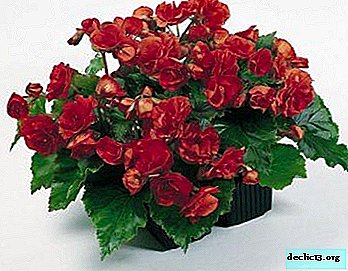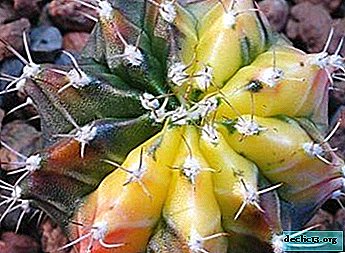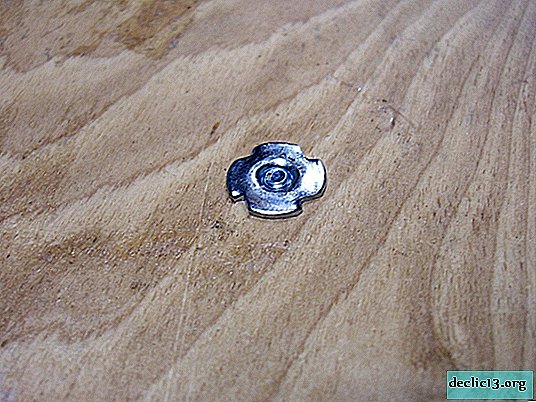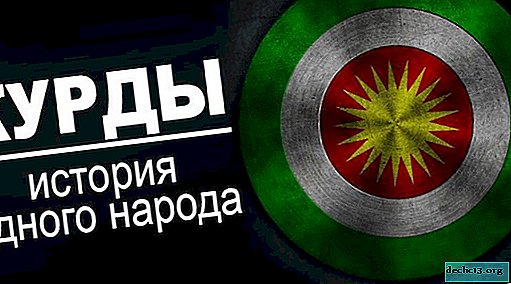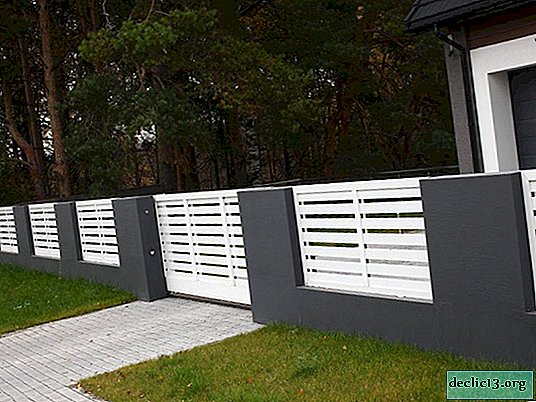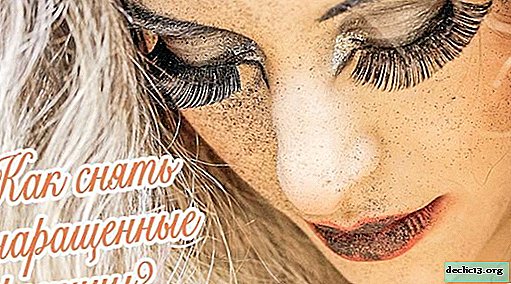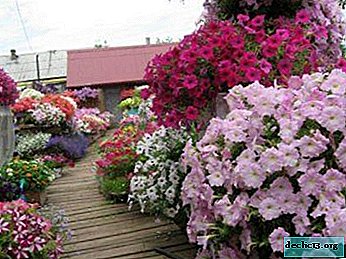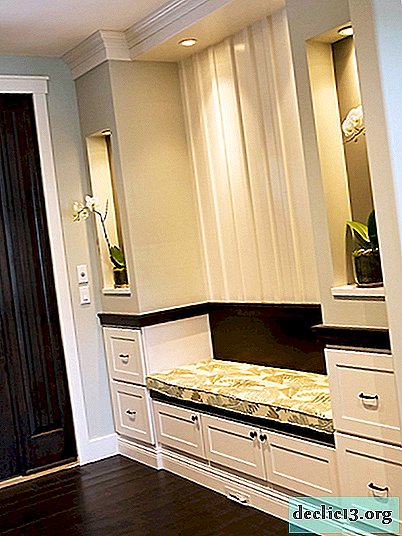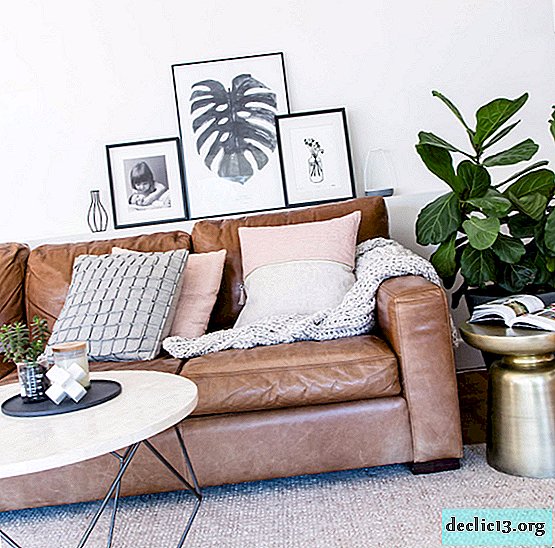What types of hibiscus are trees: photos and care for the crop in the garden. How to grow a bonsai?
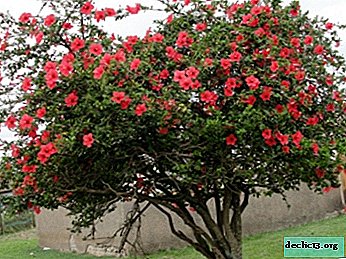
Hibiscus is a thermophilic tropical (subtropical) culture from the Malvotsvetny family. Over 200 plant species are known to science.
Authoritative sources, for example, the Great Russian Encyclopedia, speak of 300 species of this decorative family. But on the territory of Russia and neighboring countries, only a few species of plants were widely used.
From this article you will learn about what tree-like species of hibiscus exist, as well as how to care for this beautiful plant.
Types of culture of tree form and photo
Among the many varieties of moisture-loving culture, two species are recognized as tree-like forms:
- Syrian hibiscus
- hibiscus is tall.
Gardeners focused on Syrian hibiscus, as it adapts as tolerantly as possible to the conditions of the temperate continental climate. You can’t say about high hibiscus. He needs a humid tropical climate.
What should be the care of the crop in the garden?
On the garden plots you can often see a small tree with a bare trunk and spherical crown. Its height reaches 2-3 meters if the plant grows in natural conditions. Caring for a tree includes several aspects of agricultural activities.
Watering
 Humidification of the soil in the warm season is carried out continuously as it dries. But it is necessary to act reasonably, so that stagnation of water is not observed. Excessive irrigation negatively affects the root systemdestroying her. In the hottest time of the year, the tree is watered every day. All irrigation anomalies appear on flower buds or buds: they begin to fall.
Humidification of the soil in the warm season is carried out continuously as it dries. But it is necessary to act reasonably, so that stagnation of water is not observed. Excessive irrigation negatively affects the root systemdestroying her. In the hottest time of the year, the tree is watered every day. All irrigation anomalies appear on flower buds or buds: they begin to fall.
Water for irrigation should be soft, i.e. low in salt. You can achieve softening by adding soda ash or hydrated lime to the water. If the tree is planted in a large pot, then the leaves are additionally sprayed with water at room temperature.
Shine
To ensure active growth, the plant needs the right light lighting.
The sunny (south) side of the apartment or garden is more suitable for the development of the southeast culture.Priming
Best "Syrian" grows in light sandy loamy soil of high permeability. Such soil:
- holds nutrients better;
- warms up quickly and retains heat for a long time;
- well aerated;
- not prone to lumps.
Significant accumulation of humus has a positive effect on plant growth. The reaction of the soil is neutral, slightly alkaline.
Pruning
Trimming heat-loving culture is made in the spring. It stimulates the formation of new young shoots and, as a result, flowers. Agrotechnical measures include the removal of:
- damaged;
- sick people;
- old dry or abnormally growing branches.
Trimming makes it possible to give the crown a certain shape.
Top dressing
Mineral fertilizers of an inorganic nature demonstrated excellent results:
- phosphoric;
- nitrogen;
- potash.
The alternation of mineral and organic fertilizers also benefits the plant.. Spraying is carried out:
- 1-2 times a month in winter and late autumn;
- Once a week - in the spring and in the summer.
Pot
 Theoretically, the volume of a flower pot should be twice the volume of the root system. Only in such conditions will the adaptation period proceed favorably, and the stalk will not die from transplantation.
Theoretically, the volume of a flower pot should be twice the volume of the root system. Only in such conditions will the adaptation period proceed favorably, and the stalk will not die from transplantation.
For growing garden hibiscus, a pot made from:
- plastics
- ceramics;
- metal;
- a tree;
- glass.
The main thing is that the bottom is perforated, that is, it has holes for water to leak out. Otherwise, drainage material is required (crushed stone, gravel, pebbles, broken brick, etc.), which will eliminate the excessive overmoistening of the soil.
Transfer
The need for the procedure arises when the tree "outgrew" the pot. The development of the root system stops or is seriously slowed down. In this case, a thermophilic plant is planted in open ground or a larger pot.
If you plan to focus on a densely branched crown, you need a volumetric potin which the roots will be spacious. Small-sized flowerpot is used when abundant flowering is necessary.
- Transplantation begins when the soil warms up to 15 degrees Celsius, and air at least 22 degrees Celsius.
- Pre-prepared landing pit:
- Drainage material with a thickness of at least 15 centimeters is laid at the bottom, then sand is poured with a thickness of about 10 centimeters.
- Next is compost 15 cm thick, after which the tree is placed in a pit and covered with soil mixed with peat and sand in a ratio of 2: 1: 2.
If the soil was of sandy origin, then sand can be excluded from the soil composition.
- It is necessary to sprinkle the plant so that the root neck is slightly covered with earth.
- After the procedure, hibiscus is abundantly watered.
Wintering
With the onset of cold weather, the Syrian rose is sheltered from frost. This is especially important if a young tree grows in the summer cottage. An adult plant tolerates cold easier.- Previously, in the period of late autumn, hibiscus is watered and spud, and already in November, the branches bend to the ground.
- The bioobject is covered with synthetic non-woven structure.
- For greater reliability, another coating is placed on top, for example, polyethylene.
- The whole structure is covered with dry grass, spruce branches, etc.
How to grow decorative bonsai?
 Most often, bonsai are grown from Cooper hibiscus or dissected-hibiscus hibiscus.
Most often, bonsai are grown from Cooper hibiscus or dissected-hibiscus hibiscus.
- For the plant, they take a soil mixture consisting of clay, humus and gravel (3: 5: 2).
- A small bowl is placed in the room where the lighting is most bright.
- A two-year-old plant is involved in pruning. At the same time, those branches that are abundantly covered with buds or flowers do not touch. Cutting of shoots during the period of active growth is recommended to be made as close as possible to the woody part of the plant.
- Choosing a pot is an important condition for plant growth. Most often, flower growers choose stable forms for inclined trees. Wide shallow bowls are good for a densely branched crown.
- Watering is more dependent on the shape of the pot. In low structures, the soil dries faster, which means that watering is done more often.
- Sub-feed is similar to ordinary trees of the family of malvaceae (you only need to pay attention to the volume of soil and pot).
- Propagation of a Chinese rose bonsai is possible by cuttings, dividing the root system, and seeds. More than others, the method of grafting took root.
Diseases and Pests
Pathological processes occur when improper care of the plant is carried out or it is infected with harmful microorganisms. The diseases of the "Syrian" include:
- infectious and non-infectious chlorosis;
- sunburn;
- vascular wilt.
At the same time, there is a thinning and drying out of branches, falling of yellowed leaves.
Among pests stand out:
- aphid;
- spider mite;
- greenhouse whitefly;
- worms;
- scale shield;
- gall midge.
Microorganisms attack a tree from the soil. Alternative: close contact with another infected plant.
Caring for a hibiscus garden tree is not easy. But the exotic culture impeccably decorates the garden, creating harmony in the plant world.

